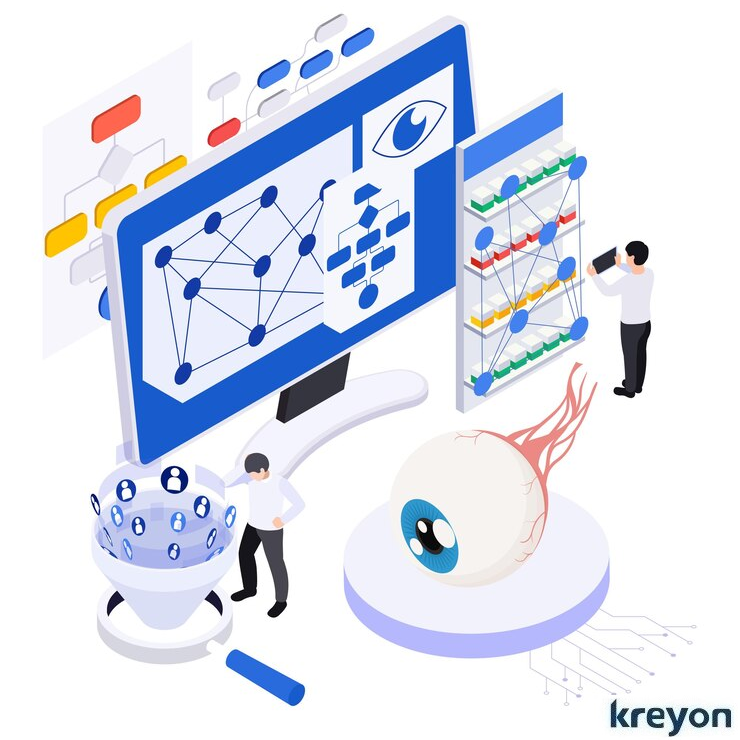Integrating ERP and SCM: Best Practices for a Seamless Transition

In an era where efficiency and agility define business success, integrating ERP and SCM (Supply Chain Management) processes is no longer just a luxury—it’s a necessity.
The integration of these two powerful systems can lead to streamlined operations, reduced costs, and improved decision-making. However, achieving a seamless transition requires careful planning and execution.
This article will explore best practices for integrating ERP and supply chain management, offering valuable insights for businesses looking to enhance their operational efficiency.
Understanding ERP and SCM Integration
Before diving into the best practices, it’s essential to understand what ERP and SCM integration entails.
ERP systems consolidate various business functions—such as finance, human resources, and procurement—into a single, unified platform.
SCM, on the other hand, focuses on managing the flow of goods and services from suppliers to customers.
Integrating ERP with SCM means aligning these systems to ensure that data flows seamlessly across the entire supply chain, enabling better coordination, visibility, and control.
Best Practices for a Seamless ERP and SCM Integration
Define Clear Business Outcomes & Goals
The first step in any successful integration project is to define clear objectives and goals. What specific outcomes do you want to achieve by integrating ERP with SCM?
Common goals include improving inventory management, enhancing supplier collaboration, and optimizing procurement processes. Having well-defined objectives will guide the integration process and help measure its success.
Set SMART Goals: Ensure your goals are Specific, Measurable, Achievable, Relevant, and Time-bound. For e.g. reducing administrative costs by 10%.
Align with Business Strategy: Make sure the integration objectives align with your overall business strategy and operational goals.
Take an e.g. of a healthcare provider integrating ERP system reduces administrative costs by automating billing, procurement, and inventory management. This leads to more efficient use of resources and cost savings.
Involve Key Stakeholders Early
Integrating ERP with SCM affects various departments and stakeholders across the organization. Involving key stakeholders from the beginning is crucial for ensuring buy-in and identifying potential challenges.
Form a Cross-Functional Team: Include representatives from supply chain, IT, finance, and other relevant departments to provide diverse perspectives and expertise.
Communicate Effectively: Maintain open lines of communication to keep all stakeholders informed and engaged throughout the integration process.
Conduct a Thorough Needs Assessment
A thorough needs assessment helps identify the specific requirements and gaps in your current systems. This assessment should include an evaluation of both your ERP and SCM processes.
Analyze Current Systems: Assess the strengths and weaknesses of your existing ERP and SCM systems. Identify any redundancies or inefficiencies.
Determine Integration Requirements: Define the data and functionality that need to be integrated. Consider how different departments will use the integrated system.
Choose the Right Integration Approach
 There are several approaches to integrating ERP with SCM, each with its own advantages and challenges. Choosing the right approach depends on your business needs, existing systems, and resources.
There are several approaches to integrating ERP with SCM, each with its own advantages and challenges. Choosing the right approach depends on your business needs, existing systems, and resources.
Point-to-Point Integration: Directly connects ERP and SCM systems. This approach can be quick but may become complex as the number of connections increases.
Middleware Integration: Uses middleware or an integration platform to facilitate communication between ERP and SCM systems. This approach is more scalable and flexible.
API-Based Integration: Utilizes application programming interfaces (APIs) to enable real-time data exchange between systems. This method is ideal for dynamic, real-time environments.
Ensure Data Consistency and Accuracy
Data consistency and accuracy are critical for successful ERP and SCM integration. Discrepancies in data can lead to errors, delays, and operational inefficiencies.
Standardize Data Formats: Ensure that data formats and structures are consistent across both systems.
Implement Data Validation: Use validation rules and automated checks to ensure data accuracy during the integration process.
Leverage Automation and Advanced Technologies
Automation and advanced technologies can significantly enhance the efficiency and effectiveness of the integration process.
Automate Data Transfers: Use automation tools to manage data transfers between ERP and SCM systems, reducing the need for manual intervention and minimizing errors.
Incorporate AI and Machine Learning: Integrate artificial intelligence and machine learning to enhance data analysis, forecasting, and decision-making capabilities.
A retail company using ERP can consolidate data from various departments into a single system, reducing errors and inconsistencies. Enhanced reporting tools provide accurate financial and operational reports, enabling better decision-making and strategic planning.
Review Before Going Live

Thorough testing is essential to identify and resolve any issues before the integrated system goes live. Testing helps ensure that the integration meets your business requirements and functions as expected.
Conduct Multiple Testing Phases: Perform unit testing, system testing, and user acceptance testing (UAT) to validate different aspects of the integration.
Simulate Real-World Scenarios: Test the integrated system using real-world scenarios to ensure it performs well under actual business conditions.
Integration Testing: Test how different modules or systems interact with each other, including data exchanges and integration points.
User Acceptance Testing (UAT): Allow end-users to test the system in a real-world environment to ensure it meets their needs and requirements.
Performance & Security Testing: Assess how the system performs under various conditions, including load testing, security and stress testing, to ensure it can handle the expected volume of transactions and users.
Data Accuracy: Check that data migrated from legacy systems to the new system is accurate and complete.
Data Integrity: Ensure that relationships and constraints between data elements are preserved during migration.
Ensure that all functionalities of the ERP and SCM systems meet the business requirements and work as expected.
Post-Go-Live Support
Successful integration requires that all users are proficient in the new system. Providing comprehensive training and support helps ensure a smooth transition and encourages user adoption.
User Support: Provide ongoing support to address any questions or issues from end-users.
Offer Ongoing Support: Provide ongoing support and resources to help users navigate any challenges or issues that arise after the integration.
Gather feedback and make iterative improvements to enhance system performance and user satisfaction.
Monitor and Evaluate Performance
Once the integration is complete, continuous monitoring and evaluation are essential to ensure that the system is performing as expected and delivering the desired outcomes.
Gather Feedback: Solicit feedback from users and stakeholders to identify areas for improvement and address any concerns.
Track Key Performance Indicators (KPIs): Monitor KPIs related to supply chain efficiency, data accuracy, and user satisfaction. Some of these metrics could be classified as follows:
a) Financial Metrics
Cost Savings: Measure the reduction in costs associated with inventory management, purchasing, production, and distribution.
Return on Investment (ROI): Calculate the financial return on the investment in the ERP and SCM systems.
Revenue Growth: Assess the impact of the integration on revenue generation.
b) Efficiency Metrics
Order Fulfillment Time: Measure the time it takes to fulfill customer orders.
Inventory Turnover: Calculate the rate at which inventory is sold and replaced.
On-Time Delivery: Track the percentage of orders delivered on time.
Production Efficiency: Measure the efficiency of production processes.
c) Supply Chain Performance Metrics
Lead Time: Measure the time it takes for products to move through the supply chain.
Fill Rate: Calculate the percentage of orders filled from stock.
Supplier Performance: Evaluate the performance of suppliers in terms of delivery, quality, and cost.
d) Quality Metrics
Defect Rates: Monitor the rate of defective products or services.
Customer Satisfaction: Measure customer satisfaction with the products or services.
Customer Complaints: Track the number of customer complaints.
By tracking and analyzing these metrics, organizations can gain valuable insights into the performance of their integrated ERP and SCM systems.
Adapt and Evolve

The business environment is dynamic, and your ERP and SCM integration should be adaptable to changing needs and technologies.
Stay Updated with Trends: Keep abreast of industry trends and technological advancements that may impact your integration strategy.
Be Ready to Make Adjustments: Be prepared to make adjustments and enhancements to your integrated system as your business evolves and grows.
For e.g. AI can identify potential risks in the supply chain, such as supplier disruptions or transportation delays. This allows businesses to take proactive measures to mitigate these risks.
Conclusion
Integrating ERP and supply chain management systems can unlock significant benefits for businesses, including improved efficiency, better decision-making, and enhanced collaboration.
Remember, successful integration is not just about technology; it’s about aligning processes, people, and strategies to create a cohesive and efficient system.
With meticulous planning and execution, your business can navigate the complexities of ERP and SCM integration and emerge stronger, more agile, and better equipped to meet the demands of today’s competitive marketplace.
Kreyon Systems offers expert solutions to help you integrate ERP and Supply Chain Management (SCM) systems seamlessly. If you have any queries, please contact us.
